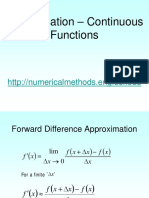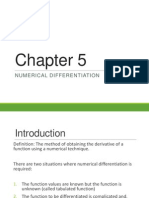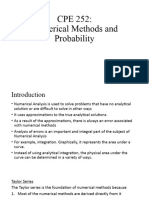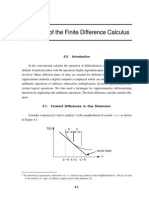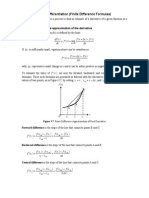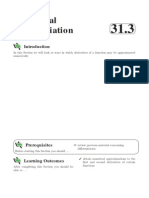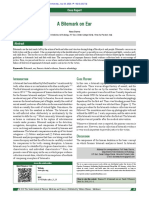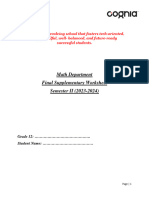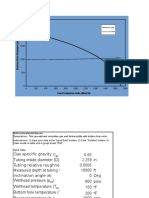0% found this document useful (0 votes)
20 views43 pagesLecture 5 Finite Difference
Chapter 5 discusses the Finite Difference Method, which is used for numerical differentiation of continuous functions, focusing on forward, backward, and central difference approximations for the first and second derivatives. It includes examples and solutions for calculating derivatives and constructing difference tables for organizing data. Additionally, the chapter addresses error analysis related to finite difference approximations.
Uploaded by
nurunnabialtairCopyright
© © All Rights Reserved
We take content rights seriously. If you suspect this is your content, claim it here.
Available Formats
Download as PDF, TXT or read online on Scribd
0% found this document useful (0 votes)
20 views43 pagesLecture 5 Finite Difference
Chapter 5 discusses the Finite Difference Method, which is used for numerical differentiation of continuous functions, focusing on forward, backward, and central difference approximations for the first and second derivatives. It includes examples and solutions for calculating derivatives and constructing difference tables for organizing data. Additionally, the chapter addresses error analysis related to finite difference approximations.
Uploaded by
nurunnabialtairCopyright
© © All Rights Reserved
We take content rights seriously. If you suspect this is your content, claim it here.
Available Formats
Download as PDF, TXT or read online on Scribd
/ 43







